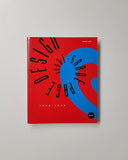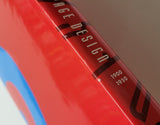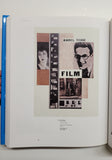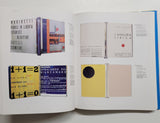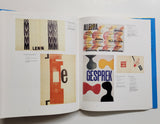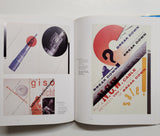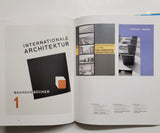Avant-Garde Page Design 1900-1950 by Jaroslav Andel
folio. pp. 388. English, French & German text. profusely illustrated. bibliography. index. hardcover. dw. (near fine - very faint shelf wear to head & foot of spine, stain to bottom corner of text block, couple surface abrasions to spine). New York: Delano Greenidge Editions, [2002].
ISBN-10: 0929445090 / ISBN-13: 9780929445090
________________________________________________________________________________________________
The primary goal of the artist-designers who were supporters of New Typography was to create an international optical language based on clarity and functionality. Using sans serif typefaces, asymmetrical compositions, photography, and photomontage, they designed type based on the simplest geometrical forms and eliminated the use of upper-case letters. Similar to the basis of the International Style in architecture, these innovations were considered to be the foundations of a new society in which the idea that form follows function and the rational, economical use of material and technique would be important elements in the creation of an egalitarian social order. However, the New Typography and International Style were utopian movements whose works and ideas did not always survive intact in a real and imperfect world. Indeed both became corrupted by political ideology and/or the corporate system. During the 1930s the corruption of avant-garde ideas and techniques were most visible in the fusion of advertising and political propaganda: the Nazis and the Soviets co-opted the powerful images and techniques of the avant-garde. The Nazi propagandists borrowed ideas from the Communists, and the Soviet Realists and Nazi artists shared a similar approach to imagery. It was this contamination of art and ideology, as well as the atmosphere of brutal political repression, that led Tschichold and others to modify or abandon their ideas and return to classical design principles.











